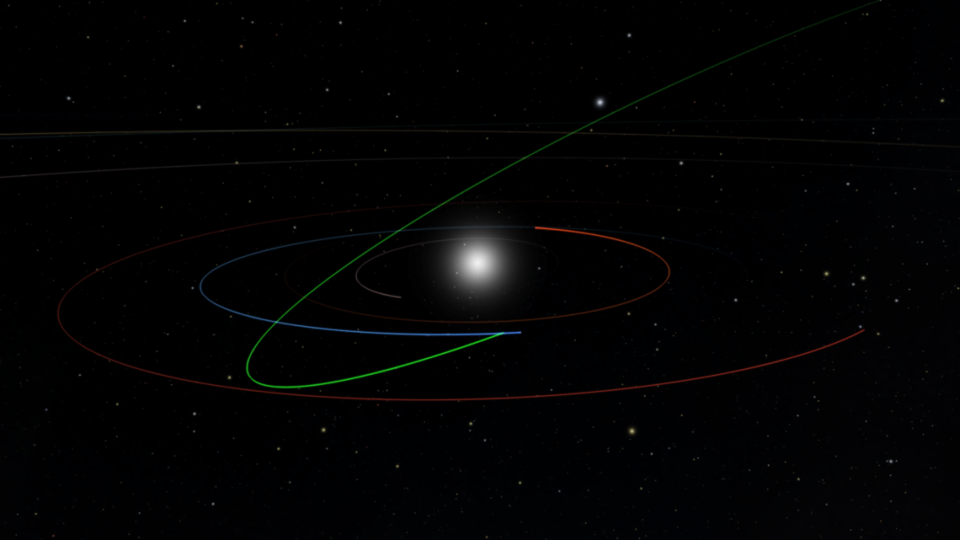'Potentially hazardous', 600-foot asteroid seen by scanner poses no immediate risk to Earth, scientists say
A new NASA-funded scanner recently captured its first ‘potentially hazardous’ asteroid, researchers said.
The nearly 600-foot-long asteroid, dubbed 2022 SF289, was discovered during a test drive of next generation algorithm using the Atlas Terrestrial-impact Last Alert System (ATLAS) in Hawaii, the University of Washington reported.
ATLAS is an early warning system developed by the University of Hawaii and funded by NASA. The system consists of four telescopes (two in Hawaii, one in Chile and one in South Africa) which automatically scan the sky several times each night looking for moving objects.

The algorithm was designed to find near-Earth asteroids for the Vera C. Rubin Observatory’s upcoming 10-year survey of the sky.
The asteroid, researchers said, poses no risk to Earth "for the foreseeable future."
The finding confirms the next-generation algorithm, called HelioLinc3D, can identify the near-Earth rocky bodies "with fewer and more dispersed observations than required by today’s methods."
“By demonstrating the real-world effectiveness of the software that Rubin will use to look for thousands of yet-unknown potentially hazardous asteroids, the discovery of 2022 SF289 makes us all safer," said scientist Ari Heinze, a researcher at the University of Washington, the principal developer of HelioLinc3D.
Voyager 2: NASA reports unplanned 'communications pause' with historic Voyager 2 probe carrying 'golden record'
UFO hearings: Witnesses call for increased military transparency on UFOs during hearing
About 3,000 more asteroids await discovery
A number of asteroids orbit close to the Earth, but those those with a trajectory that takes them within about 5 million miles of Earth’s orbit (about 20 times the distance from Earth to the moon), warrant special attention.
The “potentially hazardous asteroids” (PHAs) are systematically searched for and monitored to ensure they won’t collide with Earth, a potentially devastating event.
"No PHA discovered so far will hit the Earth within the timespan where we can accurately calculate its orbit (typically decades to centuries; can be shorter for some objects," Heinze told USA TODAY.
Scientists search for PHAs daily using specialized telescope systems like ATLAS, run by a team at the University of Hawaii’s Institute for Astronomy. A discovery is made when they notice a point of light "moving unambiguously in a straight line over the image series."
According to the University of Washington, scientists have discovered about 2,350 PHAs using this method, but estimate there are about 3,000 more awaiting discovery.
“This is just a small taste of what to expect with the Rubin Observatory in less than two years, when HelioLinc3D will be discovering an object like this every night,” said Rubin scientist Mario Jurić, director of the DiRAC Institute, professor of astronomy at the University of Washington and leader of the team behind HelioLinc3D. “More broadly, it’s a preview of the coming era of data-intensive astronomy. From HelioLinc3D to AI-assisted codes, the next decade of discovery will be a story of advancement in algorithms as much as in new, large, telescopes.”
Contributing: Eric Lagatta
Natalie Neysa Alund covers breaking and trending news for USA TODAY. Reach her at nalund@usatoday.com and follow her on Twitter @nataliealund.
This article originally appeared on USA TODAY: Potentially hazardous asteroid spotted by NASA, UW scanner in Hawaii

